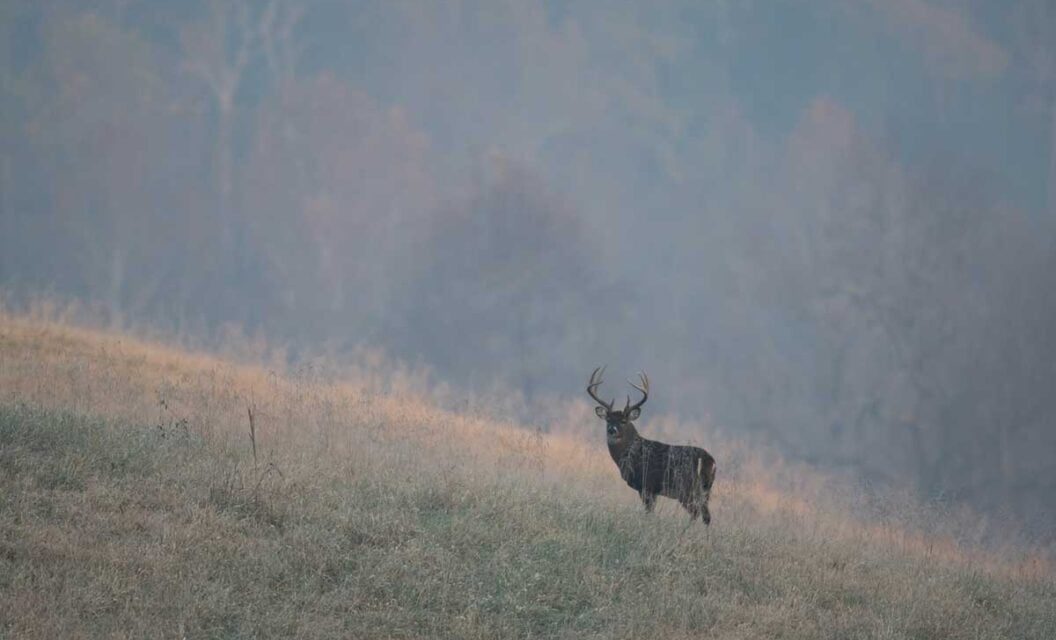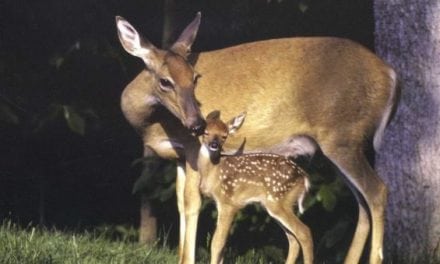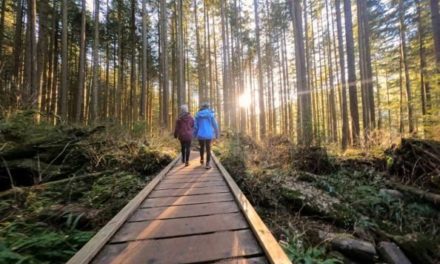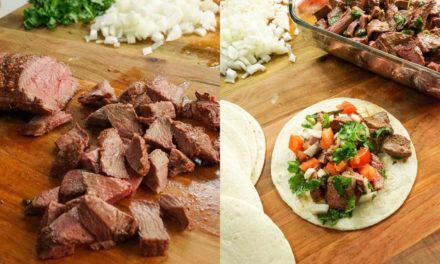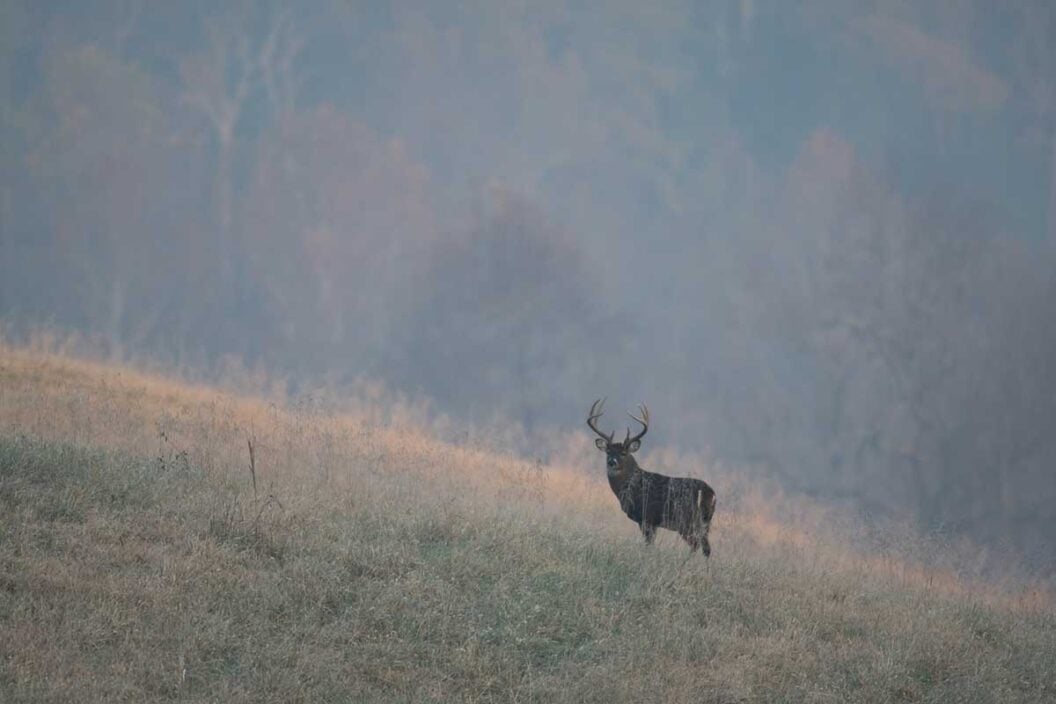
In many whitetail hunters’ minds, the hunting season and drive to hunt is basically over after the calendar turns, but hunting the extreme late season is not to be ignored if you are still trying to punch a buck tag. It can be tough this time of year, but like any other time of the season, stand placement and availability of resources are the difference makers to obtaining that final harvest. And not every state allows for antlered harvests after a certain point in the fall season, so it could be off the table entirely. However, if it’s legal in the state you’re hunting, pursuing bucks after the New Year can literally be feast or famine.
Some things about the later season do stack in the hunter’s favor. Deer, particularly bucks, get easier to pattern as the season progresses. This is due to a return to a bed/feed pattern. Food is crucial to a buck’s health after the rut has passed. They are depleted from their vigorous labors and need nutrition if they are to make it through the toughest part of winter. Therefore hunting over food sources should be your biggest focus after December 31. Also, you shouldn’t discount weather fronts as igniters of deer movement. Hunting a primary food source with a significant late season front might be as close to a guarantee as you will get all season for buck movement.
Are you interested in improving your odds of filling a buck tag in January? If you are, follow along for the blueprint I’ve used successfully on several after-holiday occasions.
Food is the Primary Focus
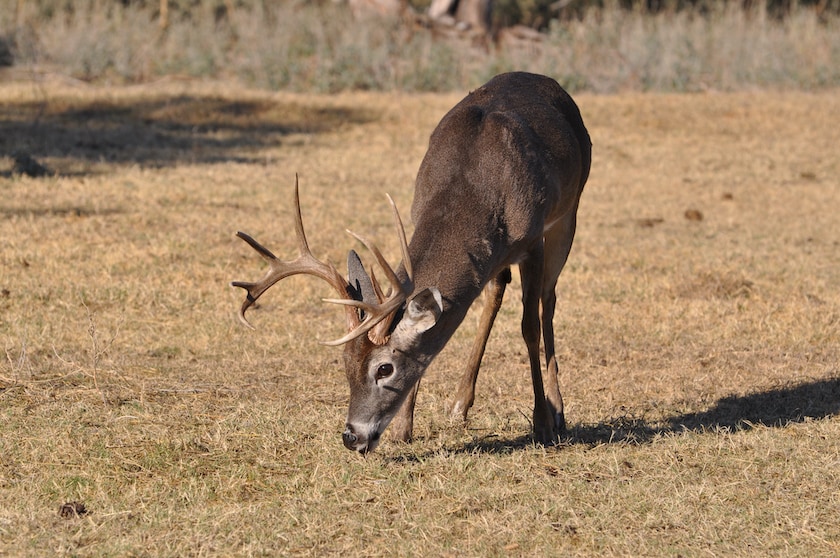
WestwindPhoto via Getty Images
On January 2, 2011 I found myself sitting over a twenty acre winter wheat field with a gun in hand. The field bordered some nearby river bottoms that I knew held deer during the year. With the calendar getting later and the weather getting consistently colder, this large winter wheat field was the perfect primary feeding destination. After setting up in the far field edge, I started noticing tracks all out in front of my setup. The field was covered in deer sign and confirmed to me that deer were using this food source heavily. Like clockwork, forty five minutes before dark, a wide, white horned nine pointer entered the field with a couple of does. After a couple minutes of feeding, he presented a shot and the rest was history.
Like I mentioned before, food is the primary aspect of successful late season hunting. Whether it’s an agricultural field like winter wheat, standing corn, or standing soybeans or large food plots planted in brassicas, the key is high tonnage food. Try focusing your efforts in these places and let the deer do what they were designed to do this time of year: eat.
Capitalize on Significant Weather Fronts
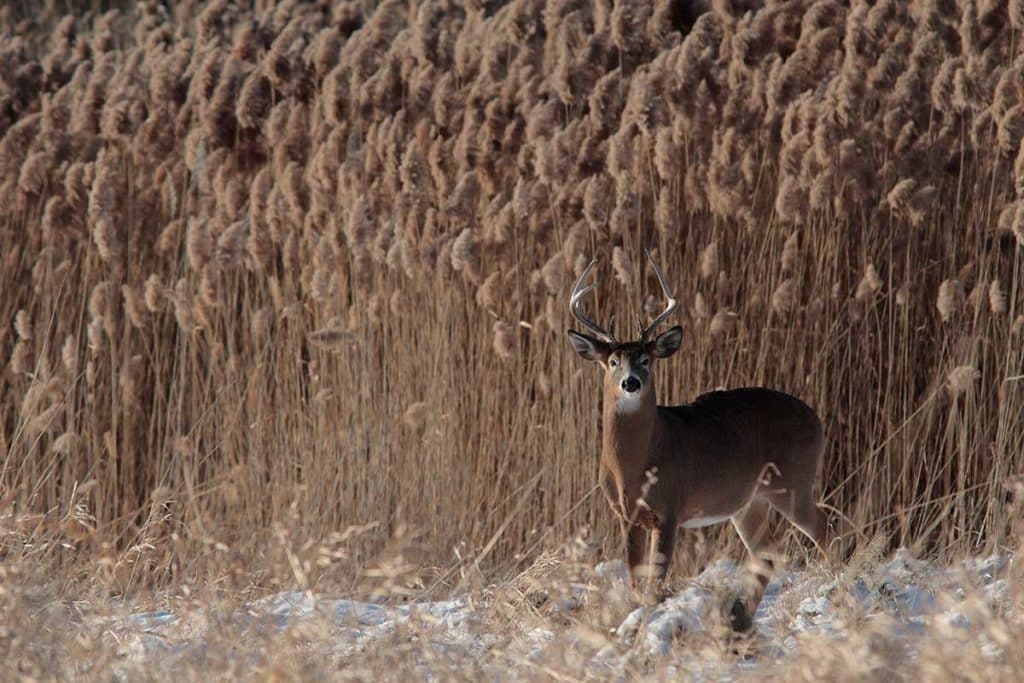
Michel VIARD/Getty
During the winter of 2017, I hunted through a cold front unlike any I had seen in Arkansas. Night temperatures dipped into the single digits and daytime temperatures never got out of the teens. It was more than cold, it was downright frigid. I knew with this extremely severe cold front that deer would be moving while the sun was up to feed, so I made plans to hunt a small, green food plot that afternoon and be ready for early deer movement.
I was not wrong in my guess. By 3:45 pm I had already seen several does, a spike, and a nice two-year-old buck just out of range. Around 4:30 pm, a beautiful, mature 10-pointer started making his way to the food plot. I took the first opportunity that presented itself as he got in range and ultimately made my shot count. That frigid weather buck still sits on my wall to this day and reminds me of that extremely special hunt.
The extreme changes in weather brought on by fronts are worth keying in on. When the temperatures are extremely cold, deer are more apt to get up during periods of bright sunlight to feed. They are able to soak in the warmth of the sun and expend less energy this way. After the holidays, hunting big cold swings as well as nice warm swings are great ways to see increased buck activity.
Volume Hunting for the Best Odds
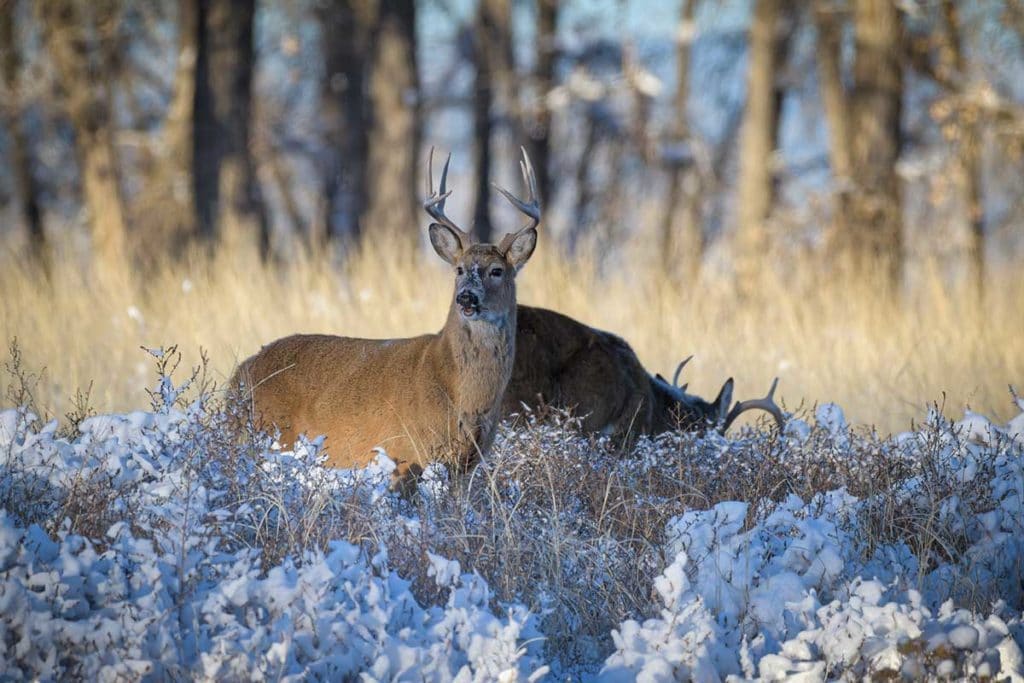
Gary Gray/Getty
January 10th, 2011 serves as a particularly special deer hunting memory, as well as a reminder of an important deer hunting truth. The weather had been cold for weeks and snow covered the ground. A bait station was placed not too far from my stand (which is legal in Arkansas), and the great weather conditions were sure to aid in my goal of harvesting a buck. I had been practicing volume hunting for the last couple of weeks, sitting for about eight or nine across two weeks. The weather had been consistent and the deer were using the bait station, so I knew it was only a matter of time.
That morning, I hadn’t been in the stand for more than 20 minutes when two bucks started approaching the setup. A big-bodied, half-racked buck reached the bait first, but my eyes were on the pretty, sleek 8-pointer behind him. The buck finally offered me an ethical shot and the rest is history. This buck serves as my latest harvest buck in a calendar year and my only snow harvest. It taught me a valuable lesson about commitment: sometimes volume hunting is the key. More time in the woods simply equals more opportunities to see a buck. After the holidays is the perfect time to employ volume hunting. The consistent weather patterns often allow you to hunt the same stand setups over and over again and the deer patterns are pretty set.
Most hunters are done chasing bucks after November ends and the woods are all but free of deer hunters by Christmas. Take advantage of this. After that, it’s a great time to be in the stand. Deer are consistent and the weather is cold, and if you haven’t reached your bag limit, it’s well worth continuing to try.
READ MORE: THE SURPRISING COMPONENTS THAT MAKE UP ANTLERS
The post Hunting Bucks After the New Year appeared first on Wide Open Spaces.

